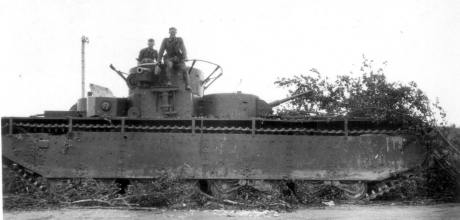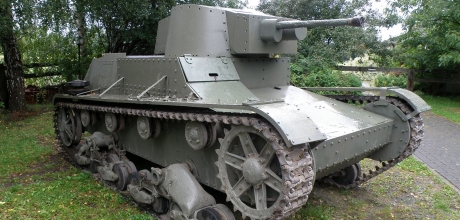
Commanders!
The Cold War was an arms race era with both sides – the NATO and the Soviet Union – constantly developing new platforms and devices to outperform the other side’s military. Recently, we’ve discussed the American DIVAD program, launched to counter the threat of Soviet airplanes and helicopters and, today, we’d like to introduce you to another such program – only, this time, the goal was to combat Soviet tanks.
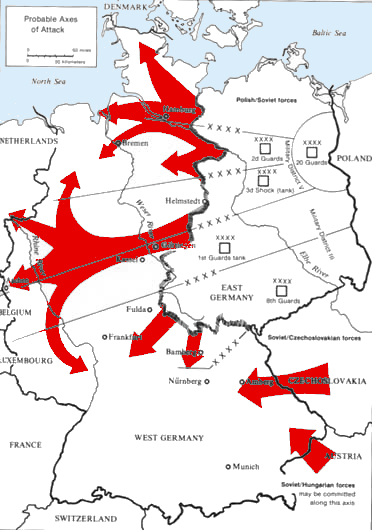
Probable directions of a major Soviet attack as imagined by the NATO in 1976
A Soviet armored assault on Europe was considered by the west to be the most likely world war level scenario practically since the late 1940s – and for a good reason. Not only did the Warsaw Pact at the height of its power own thousands of tanks, but some spots between the West Germany and its eastern counterpart were practically ideal for such an incursion. With the Soviet satellite countries securing its flanks, the Soviet Union was thought to have been able to orchestrate a rapid breakthrough, after which its armored legions would pour into the German industrial heartlands.
The United States Army dedicated a lot of resources to combating this threat in a series of programs, some of which would end up with some very interesting results, although few of these would ever see further development after the dissolution of the Soviet Union. Some of them, however, would.
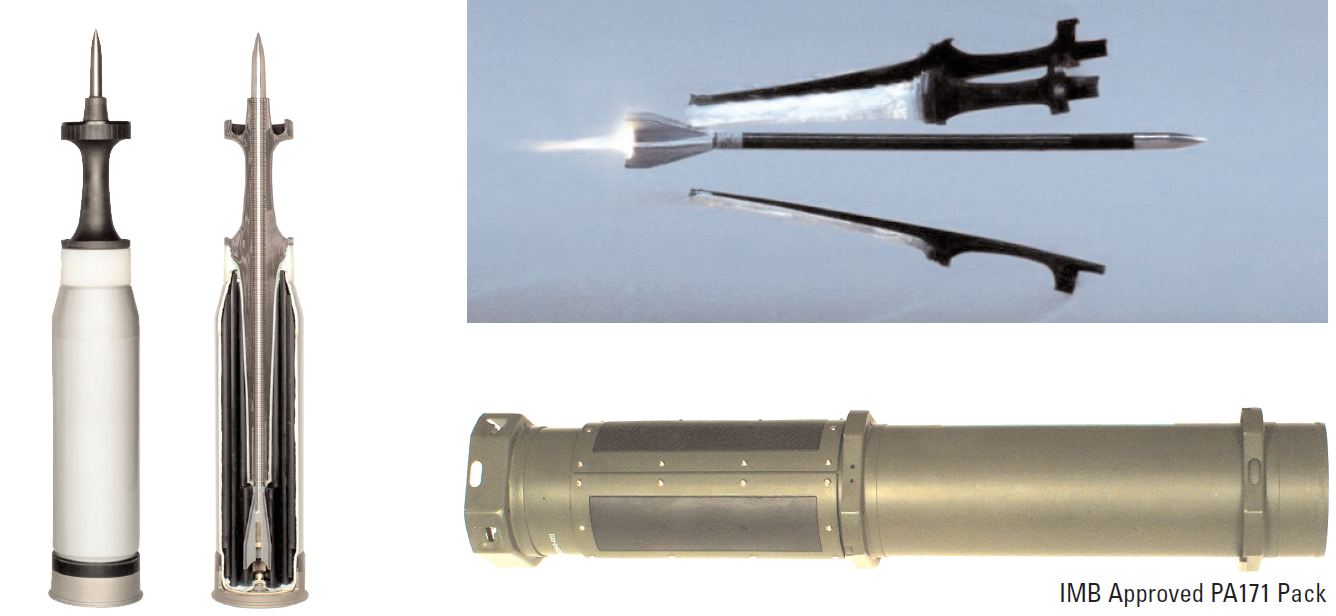
Modern APFSDS Round
The idea behind the program we are going to discuss today was to kill enemy tanks with kinetic energy. Naturally, you might think that’s nothing new – that’s what most people usually imagine as the “standard” way of destroying tanks practically since the First World War. However, in order to do that, you need cannon that can fire the projectile with sufficient energy for it to penetrate the target. In other words, what you are left with is a very heavy weapon system with a lot of recoil, which cannot be mounted on light platforms. After all, that’s why all the other tank killing means (such as HEAT warheads) were developed. But what if you could fire kinetic projectiles without needing all that?
At least that’s what the U.S. Air Force thought when, in 1981, it awarded a contract to two companies typically associated with military aircraft technologies – Vought and Lockheed – to produce what was referred to as a Hyper Velocity Missile (HVM). The HVM was intended for ground attack aircraft such as the A-10 Thunderbolt or a ground strike variant of the F-16 Fighting Falcon fighter jet.
The concept was fairly simple. It would be a missile launched from an aircraft, which would be released as any other anti-ground missile (such as the popular AGM-65 Maverick) but would feature a kinetic penetrator instead of an explosive warhead. Upon launch, the missile would accelerate to several times the speed of sound in order to match the velocity of a modern kinetic APFSDS shell, roughly 1500 m/s (Mach 4.3). For comparison, the flight velocity of a Maverick AGM was roughly 320 m/s (five times lower). The target would then be destroyed not by an explosion or a HEAT penetrator, but by the penetrator’s kinetic energy.
The advantages of such a system were obvious. For one, at roughly 5 to 9 thousand USD per piece, it was to be relatively cheap, at least compared to the Maverick (which did cost over 200.000 USD a piece by the end of the 1990s). It would of course be quicker to aim, more accurate and practically impossible to intercept or survive. With multiple launches of the same rocket per aircraft “pass” possible thanks to the ability of such a system to rapidly target and engage the enemy even at high speeds, the survival rate of the striking aircraft would rise by a lot. At least, that was the theory.
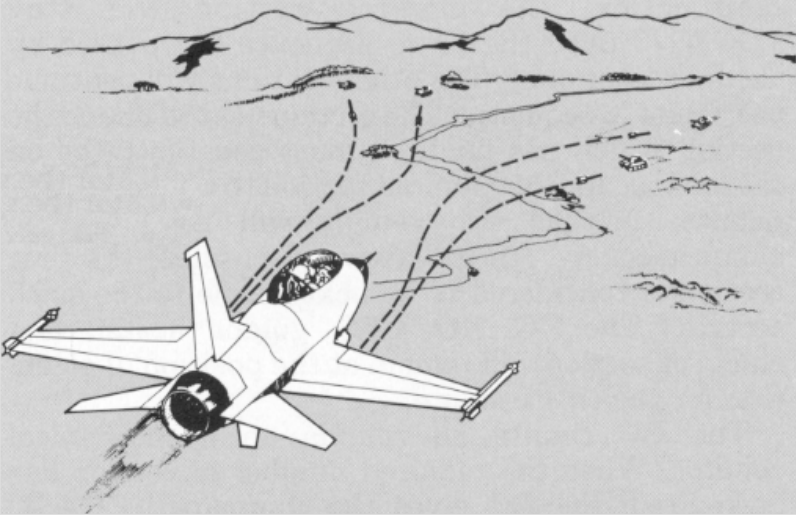
HVM Illustration
Both companies developed their own HVM demonstrators, both with roughly similar properties, in the mid-1980s.
The Vought HVM weighed roughly 30kg, had 96mm in diameter and was 2920mm long. Its top flight velocity was over 6000 km/h (1715 m/s, very high even for a cannon-fired APFSDS round). A single A-10 or an F-16 would carry two launchers with 20 missiles each. The armor penetration levels would, of course, be extreme – such a missile would be able to penetrate any tank on the battlefield. Each missile was guided by an infra-red sensor system that would send it course information via a laser. It’s worth noting that the missile was not stabilized by fins, but rather by rotation and was aimed by thrust vectoring.

Rocket Thrust Vectoring Demonstration
The Lockheed HVM was lighter (20kg per missile), shorter (2030mm) and its diameter was lower too (89mm). Nevertheless, it flew just as fast as its Vought counterpart and was equally as potent.
Both systems were tested around the end of June 1982 in White Sands (New Mexico) with the tests continuing for the next couple of years. The Vought system was deemed superior. The HVM program was eventually adopted by the other branches of the military and allegedly became a major source of interdepartmental disagreements. As a result, in 1987 or 1988, the U.S. Air Force dropped out of the program, which led to further financing problems. The HVM program was subsequently canceled.
This left Vought and Lockheed hanging and wondering what to do with a fairly advanced technology, developed on American taxpayer’s dime. It would be a shame for it to go to waste. Luckily, the U.S. Army had a program that could use such a weapon, albeit in a ground role.
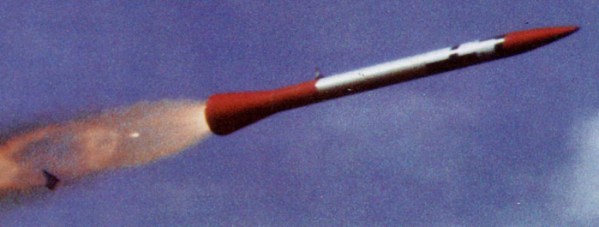
Vought HVM Prototype
The program was called Advanced Antitank Weapon System (AAWS) and its goal was, as its name suggests, to develop modern anti-tank weapons. This program ran from the late 1970s and was divided into two large sub-programs – the AAWS-M (Medium), focusing on infantry-carried anti-tank weapons (mostly guided missiles), and the AAWS-H (Heavy), focusing on heavier platforms in order to replace the ITOW system.
Interestingly enough, both parts of the program had almost nothing in common with each other and the AAWS-M part ended with the introduction of the Javelin ATGM.
As for the AAWS-H, Vought (together with Texas Instruments) decided to enter it with an up-scaled version of its HVM missile called Kinetic Energy Missile (KEM). The sub-program itself was subsequently split into two competing directions:
- Kinetic missiles (represented by KEM)
- Tandem HEAD warhead missiles (represented by Emerson Electric’s modified Hellfire and Hughes’ TOW)
Each approach had its own advantages and drawbacks. The drawbacks of HEAT-based guided missiles are well known and, at first glance, kinetic missiles (being theoretically cheaper, so fast they are practically impossible to intercept as well as more destructive) do seem like a much better choice. The immunity to enemy active protection systems (which was an emerging threat in the late 1980s) was seen as especially desirable.
However, kinetic missiles have one major disadvantage, which is their minimal range.
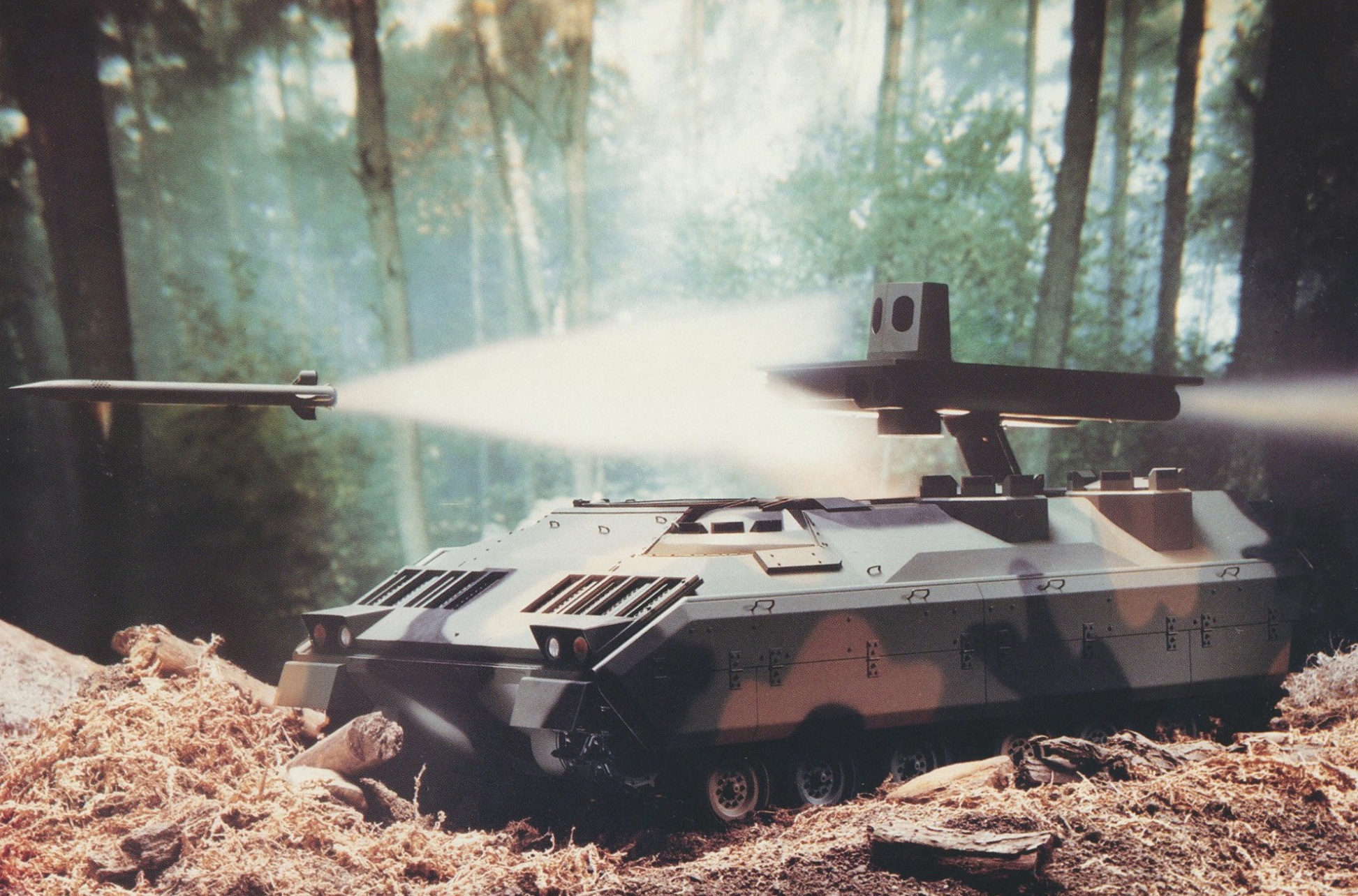
Vought AAWS-H Model
Standard TOW missiles have a minimum range of 65 meters, as do the Javelins. Kinetic missiles’ minimum range was between 300 and 500 meters. This might not seem like a big deal (given the long-distance role these vehicles were to play), but add bad weather to the mix and you might get in some serious trouble.
As for the AAWS-H sub-program, what followed was an incredible mess of events because it would eventually catch all sorts of anti-tank projects, drifting in the 1980s and 1990s between various departmental structures. Even the story behind the KEM itself is rather complicated
The missile was developed for the Bradley Fighting Vehicle platform in 1988. The Bradley AAWS-H proposal by Vought included a heavily modified IFV with retractable roof. At first glance, the vehicle resembled a normal Bradley, but a turret with four KEM missiles would elevate from the roof itself and would aim them where needed. The KEM missiles would then be fired at the desired targets using a Texas Instruments Fire Control System. As for the missiles themselves, as we mentioned above, they were larger than the original HVM, as follows:
- Length: 2794mm
- Diameter: 162mm
- Missile weight: 77kg
- Range: 4km
The missiles were propelled by solid fuel rocket engines and would reach Mach 4 in flight. Penetration values are unknown, although at this level of kinetic energy, nominal RHAe penetration made little sense – the missile would just destroy everything on the battlefield. Thus modified, the Bradley would have a crew of three men and would carry four missiles in the launcher itself and eight more in the hull.
And here’s where things get really fun. The Vought development ran until 1992 when its parent company (LTV Corporation) got into some serious financial trouble. As a result, it was forced to sell off its Vought division to another company called Loral Corporation, which was a part of Lockheed Martin Missiles and Fire Control. The KEM program therefore fell into the hands of Vought’s biggest erstwhile competitor, Lockheed Martin.
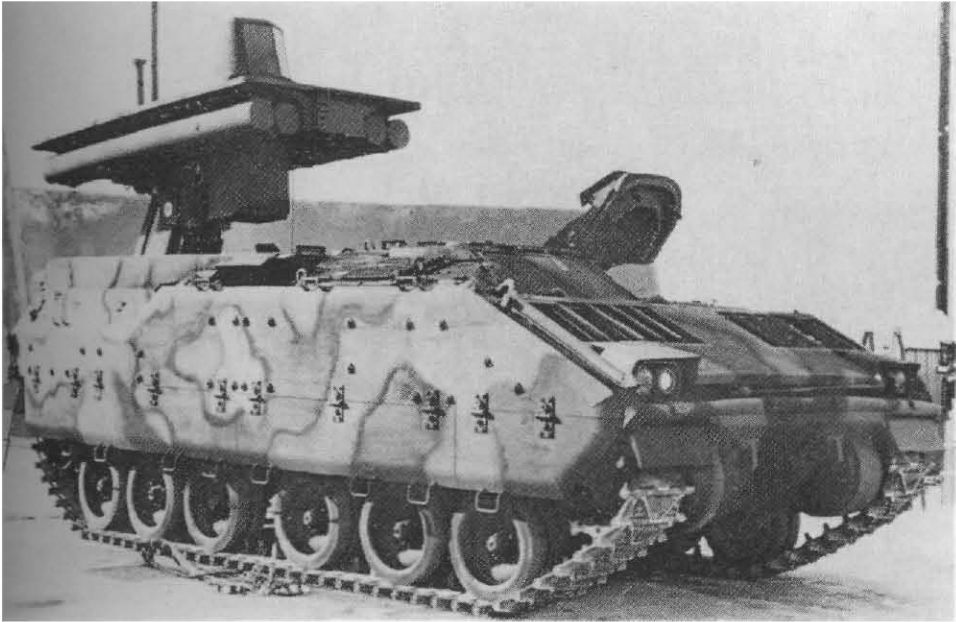
Loral Vought LOSAT on Bradley Chassis
And the Lockheed engineers weren’t sitting on their hands either. They were working on their own version of a kinetic missile under the name of Line-of-Sight Anti-Tank (LOSAT), the development of which ran in parallel to the KEM until 1992, when both projects unified under Lockheed. This is why the names KEM and LOSAT are sometimes (if somewhat incorrectly) used interchangeably. Until that year, they were two different projects, but from 1992 onwards, Vought’s AAWS-H project was referred to as Loral Vought LOSAT.
Lockheed’s LOSAT also started in 1988 as an AAWS-H competitor. Similar to the KEM project, the LOSAT counted on re-purposing one of two potential tracked chassis:
- Bradley Fighting Vehicle (a prototype was actually built)
- Armored Gun System (or, more specifically, the XM8 Light Tank)
The Armored Gun System variant was presented in the 1990s after the Bradley platform was rejected and consisted of a launcher of 12 missiles on a modified AGS chassis with a crew of three men.
Just like the KEM, the Lockheed LOSAT missiles were up-scaled compared to the HVM program, as such:
- Length: 2850mm
- Diameter: 162mm
- Missile weight: 80kg
- Minimum Range: 400m
- Range: 5km (some sources mention 7km or even more)
- Average flight velocity: 1500 m/s
The testing began in 1990 and showed much promise, but the early 1990s were not the best time for innovative military programs anywhere. With the collapse of the Soviet Union and the ease, with which the U.S. Army disposed of the Iraqi one in the Gulf (until that time, Iraq was thought to have had one of the most powerful non-superpower militaries in the world), many of the programs got de-funded by 1993, including the LOSAT.
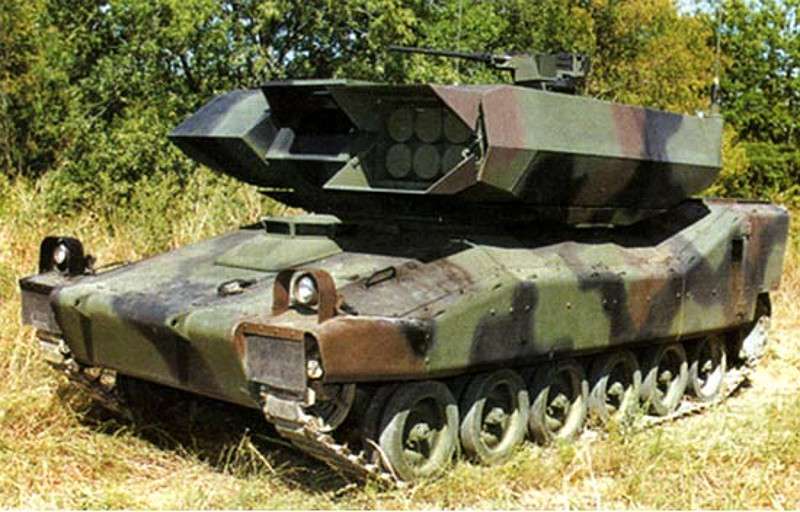
LOSAT on AGS Chassis
The program didn’t get canceled completely though (unlike so many others), it simply received less money, effectively demoting it from a search for the next anti-tank service vehicle to a technology demonstrator one. For that purpose, a simple Humvee got adapted in 1996 to carry four of these missiles that received the MGM-166 military designation.
The firing trials were fairly successful but despite that fact, the American Department of Defense sought to de-fund the expensive project even further to the point of cancellation.
Its saving grace turned out to be 1997 Advanced Concept Technology Demonstration program. At this point, the project was practically privately funded by Lockheed in an effort to impress the military enough to once again pick up the tab – and impress they did because the LOSAT project defeated 75 other prospective projects to come on top.
As a result, a new seven-year contract for further LOSAT development was signed in 1998, five of which were dedicated to development and two to testing. During these five years, the LOSAT missile flight velocity was improved to incredible 2200 m/s while being reduced in size. This variant delivered monstrous 90 MJ of impact energy (for comparison, an average 1990s APFSDS round delivered around 6 MJ). This improved version received a new official military designation in 2002: MGM-166A.
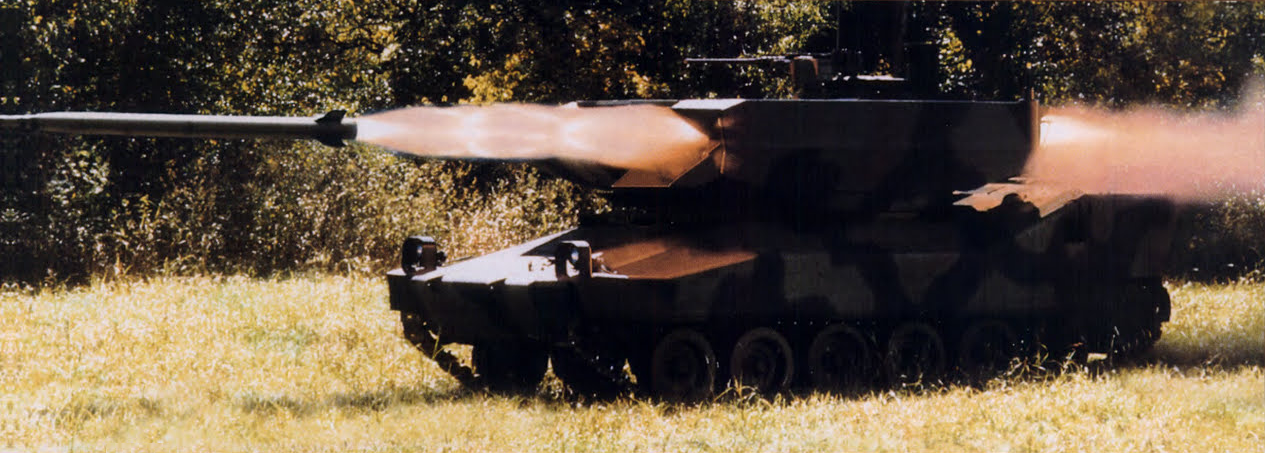
LOSAT on AGS Chassis
The 82nd Airborne Division, based at Fort Bragg was charged with military tests starting from 2002 and, between 2002 and 2004, a series of live launches was conducted, each ending with the destruction of its target, be it a tank or an IFV. The missiles did indeed perform very well and the military ordered over a hundred of them during those years with four hundred more ordered in the early 2004.
But it was not to be. In 2001, the world changed once again with the September 11 attacks and, by that time, fighting enemy armor was no longer considered a priority. The War on Terror had started in full and it would be another decade before the U.S. military priorities would shift again. The LOSAT project itself was canceled in the summer of 2004.

LOSAT Humvee Demonstrator
Interestingly enough, even before the original LOSAT was canceled, Lockheed Martin would receive additional funding for an offshoot called Compact Kinetic Energy Missile (CKEM), the purpose of which was to make the LOSAT ) more compact. The CKEM was a part of the ill-fated Future Combat Systems program, which already probably gives you an idea of how it went.
Nevertheless, Lockheed Martin succeeded in making the LOSAT smaller and capable of engaging even some flying targets (mostly helicopters). The CKEM missile had the following characteristics:
- Length: 1500mm
- Missile weight: 45kg (half of LOSAT)
- Minimum Range: 200m (half of LOSAT)
- Maximum Range: 10km (double of LOSAT)
- Average flight velocity: 2230 m/s (or higher)
- Impact energy: 10 MJ
It is not known how many were built or tested, but one definitely destroyed a T-72 tank with ERA at 3400 meters in 2007. Despite this success, the program was, once again, canceled with the rest of the FCS projects in 2009 and has not been revived since.
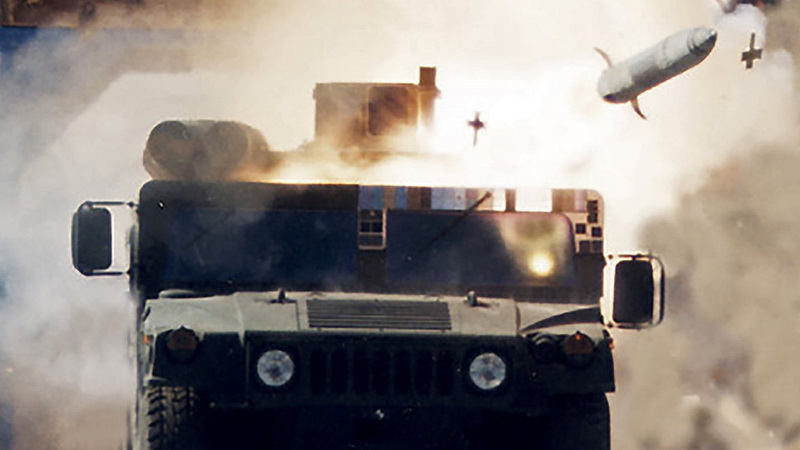
CKEM Humvee Demonstrator
Either way, as you already know, the MGM-166 LOSAT (on M8 Thunderbolt chassis) will be making an appearance as a Tier 10 Tank Destroyer in Update 0.30, featuring some unique mechanics that we’ll tell you more about in the near future. But will it remain the only vehicle with kinetic missiles to be introduced to Armored Warfare?
Time will tell... but until then:
See you on the battlefield!




